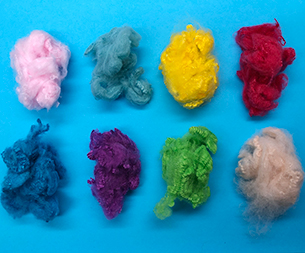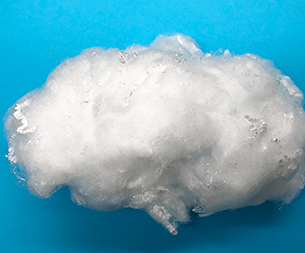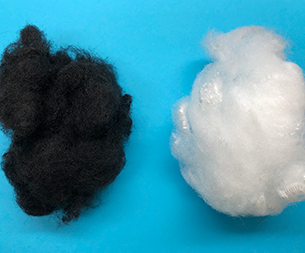Polypropylene short fiber with polyamide fibers, polyester fiber light, viscose fiber light, etc. have their own advantages, polypropylene short fibers are mainly raw materials with polypropylene resins, after melt spinning, drafting, curl, drying stereotype , Packages and other process processes are colored and colorless, and they specify the fluffy fibers of the number and length.
So the polypropylene short fiber has those quality performance? Light, the density is 0.9 ~ 0.92 g / ccC, which is the lightest in all synthetic fibers, which is 20% lighter than the polyamide fiber, 30% lighter than the polyester fiber, 40% minus the viscous fiber; intensity; High (dry state and wet state), wear resistance and return elasticity; anti-microorganisms, not mildew; chemical resistance is also superior to general synthetic fibers. In addition, the electrical insulation and warmth of polypropylene short fibers are preferably electrically insulating and warm than other synthetic fibers, and its resistivity is high (7 × 1019 ohm, cm), and the thermal conductivity is small.
However, the polypropylene short fiber has a low melting point (165 ~ 173 ° C), poor light, thermal stability, sooth polypropylene fiber heat resistance, poor aging resistance, usually takes the addition of heat stabilizers and anti-aging agents to improve their performance. Its hygroscopicity and dyeness are the worst in the synthetic fibers, and the slot margin is less than 0.03%, and the ordinary dyes cannot be colored, and therefore, in the spinning, a quantity of coloring masterbills are added to the raw material polypropylene. Coloration.
Product performance:
1. Apropylene short fibers have superior humidification, flexibility, surfing, and superior thermal bonds.
2. High strength, strong curl, light weight, low melting point, good surface permeability, acid base resistance, better than other fibers
Polypropylene short fibers are mainly used in acupuncture carpets, automotive interiors, non-woven fabrics, ropes, decorative materials, health care products, etc.
Polypropylene short fibers are mainly used in: acupuncture non-woven fabric, bathroom non-woven fabric, acupuncture carpet, car interior cloth, geotextile, speaker cloth, filter cloth, filter yarn, clothing lining, artificial fur, spinning, Textile wire, filter material, adsorbed material and other fields.
Taizhou Hailing Chemical Fiber Co., Ltd. is a Thailand City Morning Synthetic Fiber Plant. Founded in 1995, it is a technical chemical fiber company specializing in the development, production and sales of polypropylene short fibers. The company has more than 170 employees, accounting for 54,000 square meters, and the factory has 20,000 square meters, and the office building is 5,500 square meters. The company has 5 advanced automatic polypropylene short fiber production line, with a year of production capacity of 50,000 tons. The company has established a perfect polypropylene short-fiber testing laboratory with a full set of fiber testing instruments, with the ability of new fibrobial products. As the Chinese polypropylene short fiber manufacturer, the company produces full range of polypropylene short fiber products, the main applications include automotive industries, civil engineering, liquid filtration, home, and textile. The company has passed ISO9001: 2015 international quality system certification.
- The core applications of polypro
- Textile foreign trade has shifte
- How to choose the right polyprop
- Cross-border textile merchants a
- Optimization of Production proce
- What impact does the United Stat
- Unveiling the outstanding proper
- The 11th China International Sil
- How does polypropylene staple fi
- The 2025 International Textile F
- Markets
- Automotive Products
- Nonwoven Lining
- Geosynthetics
- Liquid Filtration
- Apparel and Textiles
- Hygiene Products
- Building and Construction
- Other Markets
- Contact Us
- Contact Haibang





